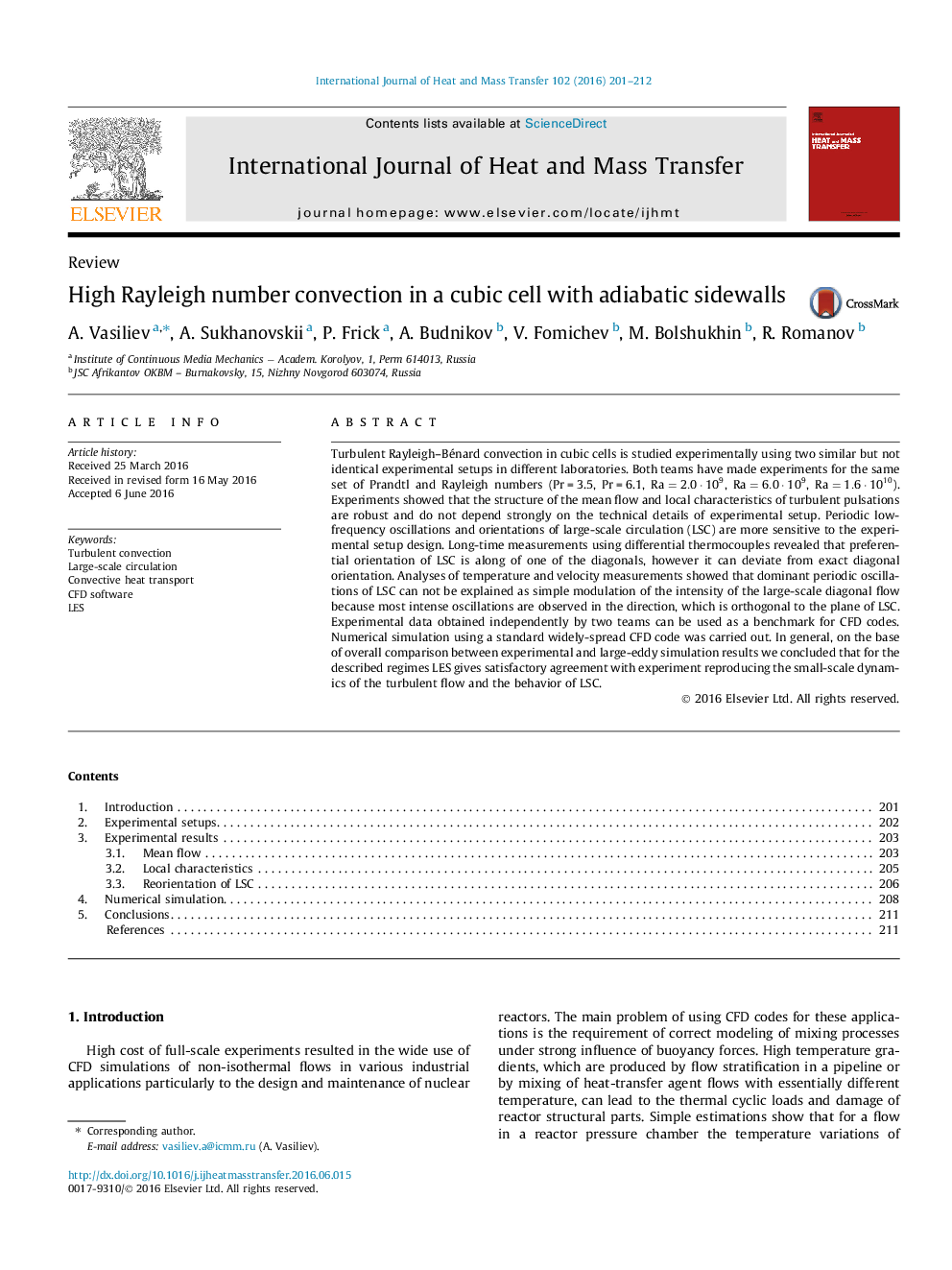| Article ID | Journal | Published Year | Pages | File Type |
|---|---|---|---|---|
| 7054966 | International Journal of Heat and Mass Transfer | 2016 | 12 Pages |
Abstract
Turbulent Rayleigh-Bénard convection in cubic cells is studied experimentally using two similar but not identical experimental setups in different laboratories. Both teams have made experiments for the same set of Prandtl and Rayleigh numbers (Pr = 3.5, Pr = 6.1, Ra=2.0·109, Ra=6.0·109, Ra=1.6·1010). Experiments showed that the structure of the mean flow and local characteristics of turbulent pulsations are robust and do not depend strongly on the technical details of experimental setup. Periodic low-frequency oscillations and orientations of large-scale circulation (LSC) are more sensitive to the experimental setup design. Long-time measurements using differential thermocouples revealed that preferential orientation of LSC is along of one of the diagonals, however it can deviate from exact diagonal orientation. Analyses of temperature and velocity measurements showed that dominant periodic oscillations of LSC can not be explained as simple modulation of the intensity of the large-scale diagonal flow because most intense oscillations are observed in the direction, which is orthogonal to the plane of LSC. Experimental data obtained independently by two teams can be used as a benchmark for CFD codes. Numerical simulation using a standard widely-spread CFD code was carried out. In general, on the base of overall comparison between experimental and large-eddy simulation results we concluded that for the described regimes LES gives satisfactory agreement with experiment reproducing the small-scale dynamics of the turbulent flow and the behavior of LSC.
Related Topics
Physical Sciences and Engineering
Chemical Engineering
Fluid Flow and Transfer Processes
Authors
A. Vasiliev, A. Sukhanovskii, P. Frick, A. Budnikov, V. Fomichev, M. Bolshukhin, R. Romanov,
